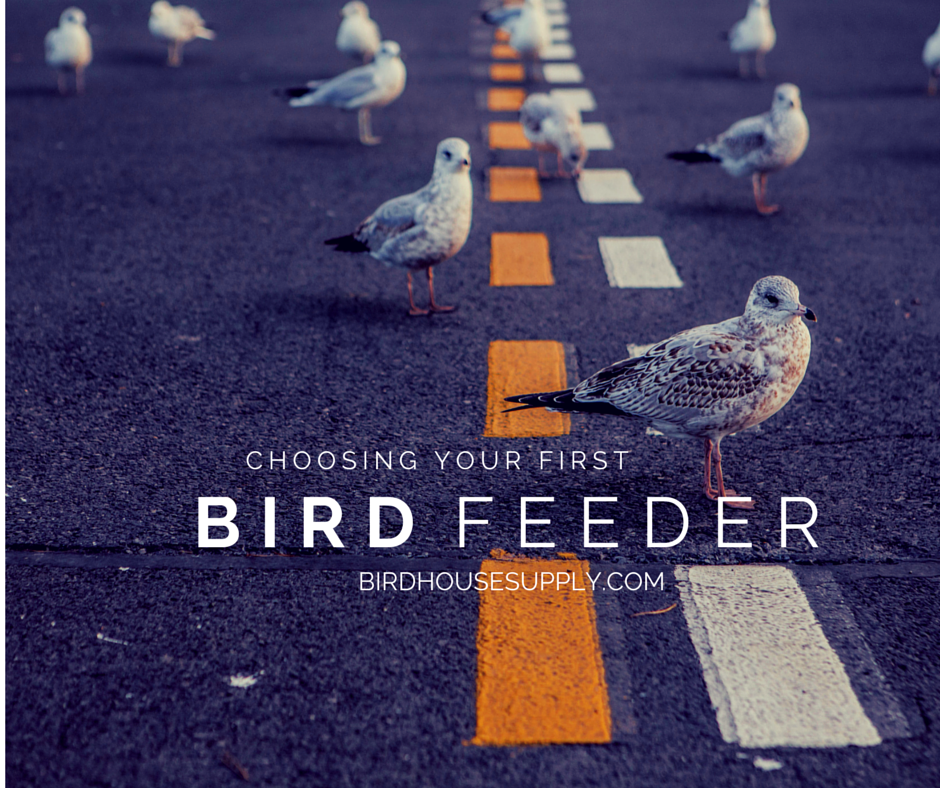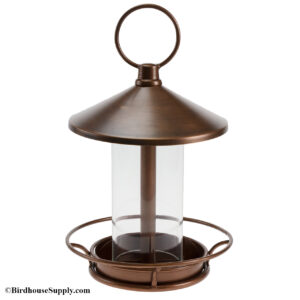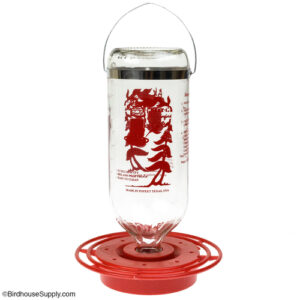Any trip to the local hardware store, grain supply store or major garden center unfurls an array of bird feeders – big ones, small ones…plastic, wood, wood/plastic, window and pole feeders. And then, there are the suet combo feeders, nut feeders, sunflower trays and mixed seed tubes. Trying to scratch your way through all of these makes you feel like that rufuos-sided towhee under your lilacs. Should you just feed the cardinals and juncos or… what do indigo buntings eat? You also need to make your eloquent mockingbirds happy? Maybe just find the cheapest one… or does it really pay to buy the handmade/carved and painted luxury suet seed combo condo?
Buying a bird feeder is like shopping for a car. You need one and there are so many options and styles and colors
that you balk at the idea of getting started. Purchasing your bird’s dinner delivery system is quite a bit easier and you won’t have to deal with slick salesmen.
The first consideration you want to deploy to evaluate your needs is simple – what species visit your area. Visit local birding societies, check out websites like the National Audubon Society’s and pull out that dog-eared bird identification guide. Click here for a great resource from the University of Wisconsin. For instance, you won’t need a feeder for Scarlet Tanagers in Colorado. Spend quiet time sitting in your yard are watching out the window. Observation is a key element for bird watching and your best tool.
Notice which birds are visiting your area and which are nesting there. Cornell Ornithology Lab has a phenomenal, interactive, bird identification guide with songs included. Spend time hiking and sitting in local parks and nature ways. The sitting and waiting is the activity, bring a birding book to read or your favorite thriller – this may take a while. Once the birds acclimate to you being there they will slowly seep out into view. How many times do we remember that our first view of a Pileated Woodpecker was the sound of his call and hammer from waaay up the tall pine? You never actually SAW him. Learn to recognize the call of birds, as that is often the first “sighting”…and often the only one!
Once you collect a list of species in your locale, categorize them in a “wants” folder. Jot down the birds that are already in your area, those that migrate into the zone and those that you would really like to invite into your feeding station. Remember a feeding station is only as popular as the habitat you create. They go hand in hand. Birds are like tourists – they really show up at the hottest restaurant in the “resort” town. Just like a great chamber of commerce you have to give them a reason to want to come to your “villa,” and birds are too smart for tourist traps!
Styles of Feeders
Bird feeders are made in a variety of designs and models in order to address the feeding methods of the bird species. Feeders come in tube-hopper, barn or ranch hopper, lantern-shaped hopper and many other fancifully shaped forms. These are fitted to hang from a crook or limb, or mount to a pole. There really are no good or bad types of stations only feeders that are BEST suited for your bird species and needs. For instance if you are planning to fill and check your feeder on a daily basis, buying a smaller model will be cheaper and it will give you the opportunity to monitor feeding selections and amounts. A large hopper feeder may be boring as it won’t give you the opportunity to maintain the station as often as you would like – and this is a key feature for children. If the kids can’t have a “hands-on” involvement on a daily basis they may lose interest in the feeding process. If you have loads of birdies and work full time, a larger hopper will be your better choice.
The same can be said for the birds! If you put a thistle feeder out for your cardinals and grosbeaks – they will take their business elsewhere. Cardinals and grosbeaks are perching feeders; they will want a station that has a lip, large perch loops or bars, or a tray/shelf feeder. Other birds like juncos, doves and titmice enjoy dining from under the feeder. They will also use a tray feeder. Tray feeders allow birds to fly right in and munch on the trough’s shelf. If you live in a dry climate, like the Southwest, roofs and drainage will not be an issue, but for most other areas roofs and drains keep wet off the tray and prevent stagnant clumps of moldy seed. Squirrels love tray feeders (and this may be good or bad!).
It is wise to purchase two stations, and maybe even two different styled feeders, that allow birds to move between the options. The classic tube hopper style is great for most feeding areas – it will attract finches, chickadees and nuthatches. These feeders are filled with seed mixes and sunflower seeds – the “usual” dining fare for most backyard visitors. Since the feeders are just the plates and forks, be sure to buy quality seed, as it is the actual food that holds the nutrition and maintains the health of your birds.
Bird Feeder Materials
Feeders come in glass, recycled plastics, metal, traditional wood and combinations of these. Choosing which material is a matter of preference. Cheaper plastic versions will fade and discolor. Squirrels will chew wood and decimate thin plastics. Some plastic feeders are crafted to resemble faux-wood – they are fade resistant and relatively ready to stand up to squirrel teeth. If children will be handling feeders, size/weight and glass may be safety issues.
Specialty Feeders
These are designed to serve unique needs and species with distinctive tastes. You can buy a mesh, thistle feeding sock and watch the finches and nuthatches nibble upside down. Some tube thistle feeders are constructed without perches to frustrate sparrows.
There are “log” feeders that hold suet balls, suet cages, and special trays that deliver bluebird nuggets and mealworms. Some bowls are sold that will hold live waxworms and mealworms. You can buy bolt-type feeders that hold oranges for orioles. And if you want the bird experience up close get a window feeder that uses suction cups to stick the clear plastic feeder to the pane.
Bird feeder manufacturers use research by ornithologists to develop their products. Visit The National Audubon Society and The Cornell Lab of Ornithology at Cornell University to learn more about birding.
Combination Feeders
Combination feeders blend several food holders in one handy station. They usually come with one or two suet cages that are affixed to the long ranch-styled feeder. Some are hopper filled and others have the covered trough or shelf. These designs serve the needs of many species. The trough styles can also be filled with nesting materials, peanuts, bluebird food or mealworms. One drawback of the suet cage combination is that…well, the cleaning gets complicated as the suet grease saturates the feeder and cleaning becomes a real chore whether you choose plastic or wood. The larger the model – the more awkward it is to fully clean.
Troubleshooting
If squirrels and starlings become an issue at your main feeding station there are solutions. You can purchase feeders that foil large birds and squirrels.
Sometimes the best way to deal with squirrels is to give-in and buy these furry guys their own diner. There are clever and delightful squirrel table feeders that use a bolt screw to hold ears of corn. These will also attract blue jays.
Nectar Feeders
Nectar feeders are built to hold the liquid mixes that attract hummingbirds and orioles. Many have bee guards to prevent these insects from invading. Others also add ant deflectors or moats.
Do your pre-purchase research before investing in your feeder. Like the squirrels at your feeding station you will certainly find yourself spoiled for choice!
- Note: Never feed suspect, moldy or rodent infested feeds. Always clean and completely dismantle and scrub your feeder on a regular basis. The health of the birds depends on great quality feed and clean feeders.




